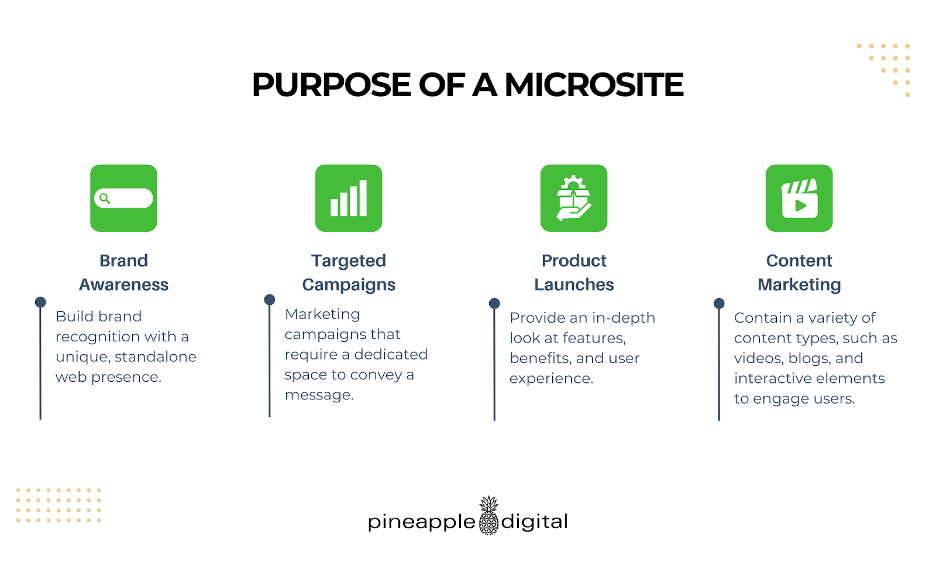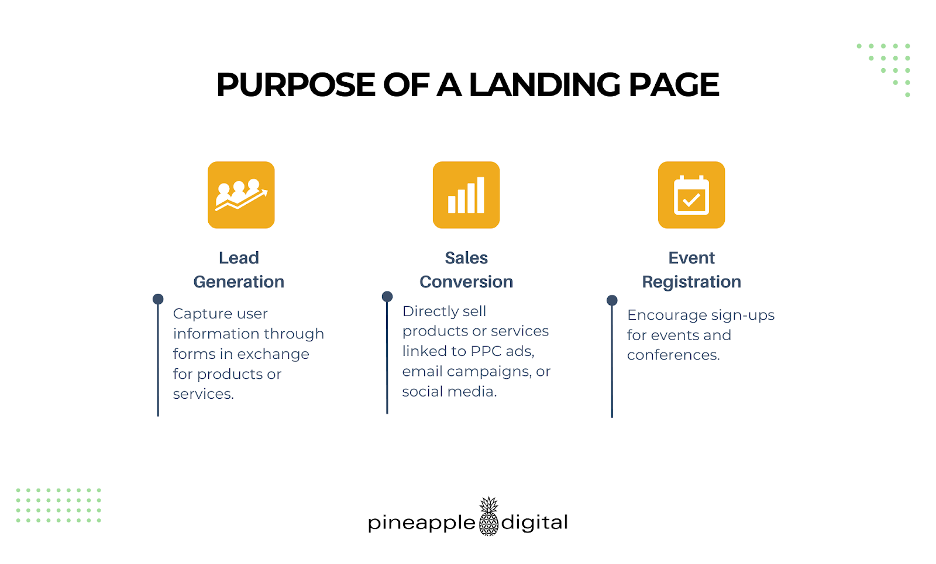“Microsites are standalone, multi-page websites designed for specific campaigns or target audiences, offering detailed content to increase user engagement and brand awareness. In contrast, landing pages are single-page sites focused on driving conversions through calls to action, making them ideal for short-term campaigns and direct-response marketing.”
In digital marketing, understanding the tools at your disposal is important for creating effective campaigns. Two such tools, microsites and landing pages, are often utilized to improve online marketing strategies, yet they serve distinctly different purposes and are designed with different goals in mind. Whether you’re looking to increase conversions, enhance brand awareness, or provide detailed product information, knowing when to use a microsite versus a landing page can significantly influence the success of your digital initiatives.
What is a Microsite?
A microsite is a branded content site that exists outside of a company’s main website or brand domain. It usually has its own URL and can range from a single page to a small cluster of pages. Designed as a separate entity, microsites are focused on specific campaigns or target audiences, such as product launches, events, or promotions. They provide a detailed and immersive web experience, offering content distinct and separate from the main website. This helps to avoid clutter and enhance user engagement.
Purpose of a Microsite

Microsites serve several purposes, including:
- Brand Awareness: They can be used to build brand recognition with a unique, standalone web presence.
- Targeted Campaigns: Microsites are perfect for marketing campaigns that require a dedicated space to convey a focused message.
- Product Launches: When introducing a new product, a microsite can provide an in-depth look at features, benefits, and user experiences.
- Content Marketing: They can house a variety of content types, such as videos, blogs, and interactive elements, to engage users more deeply.
What is a Landing Page?
A landing page is a single web page designed with the specific purpose of converting users into leads or customers. It is part of the main website and focuses on a single call to action (CTA), such as subscribing to a newsletter, registering for a webinar, or purchasing a product. Landing pages receive traffic from various marketing campaigns, including PPC (pay-per-click) advertisements, email marketing, or social media ads, and are crafted to encourage visitors to take a particular action directly related to the campaign’s goals.
Purpose of a Landing Page

Landing pages are used for:
- Lead Generation: They capture user information through forms in exchange for offers like ebooks, webinars, or free trials. These could include requesting demos or contact forms throughout the page.
- Sales Conversion: Companies directly sell products or services on their landing pages. They are often linked to PPC ads, email campaigns, or social media.
- Event Registration: They are ideal for encouraging sign-ups for events or conferences.
Key Differences Between Microsites and Landing Pages
Purpose and Scope
Microsites provide a broader narrative that can support various activities or features related to a campaign. They can house multiple pieces of content like videos, galleries, and blogs. In contrast, landing pages are focused on driving visitor actions and usually contain a single call to action (CTA).
Design and Functionality
Microsites often mirror the look and feel of the main website, but are distinct enough to be seen as a separate entity. They can include multiple pages and complex designs. Landing pages are more straightforward, designed to eliminate distractions and focus users’ attention on the CTA.
SEO Impact
Microsites can be used to target specific keywords and can thus help in SEO strategies by attracting organic traffic with their unique content. However, if a microsite is on a subdomain of the website, it could be difficult for Google to understand the relationship between the two, and both sites might not receive as much SEO benefit. Landing pages are typically not SEO-focused, but are optimized for conversion rates from traffic generated via direct marketing campaigns.
Content and Design
Microsites often feature a rich, engaging design and can include interactive elements like videos, maps, and social media integration. This makes them more comprehensive and informative. Landing pages are generally more straightforward. The design focuses on quickly communicating the message and guiding visitors toward a specific conversion goal. They tend to be less content-heavy than micro-sites.
Longevity and Maintenance
Microsites can be temporary or permanent, but generally have a longer lifespan than landing pages. They may require more maintenance due to their complexity and the broader content they cover. Landing pages are often used for short-term campaigns. They are easier to create and maintain due to their simplicity and single-purpose focus.
Advantages of Microsites
Microsites offer a unique advantage by allowing for greater creative freedom, as they are not bound by the design and navigational constraints of a company’s main website. This flexibility enables brands to tailor their sites to enhance brand awareness and creatively promote new product lines. Microsites can be optimized to rank for specific keywords, thus attracting organic traffic and increasing visibility. Additionally, they provide the opportunity to create targeted campaigns that might not align with the broader content of the main website. This enables precise analytics tracking, allowing marketers to closely monitor campaign performance and user engagement, ensuring that marketing efforts are accurately assessed and optimized.
When to Use a Microsite
- Long-Term Campaigns: For campaigns that are expected to run for an extended period.
- Product Launches: When launching a new product that needs a lot of informational content.
- Market Segmentation: When targeting different user bases with specific content that does not align with the main site.
Advantages of Landing Pages
Landing pages are designed to efficiently convert visitors into leads or customers by focusing on a single objective with a clear call to action (CTA), minimizing distractions. They are not only cost-effective but also require less content, making them quicker to design and produce than microsites. This simplicity also facilitates easier A/B testing, allowing marketers to experiment with different elements to optimize conversion rates effectively. As such, landing pages are an ideal choice for specific campaigns where time and budget are key considerations.
When to Use a Landing Page
- Short-Term Campaigns: Ideal for brief, focused campaigns like promotions or event registrations.
- Direct Response Marketing: When the goal is to get an immediate response from the target audience.
- A/B Testing: Perfect for testing different marketing strategies to see which is more effective.

How to Choose Between a Microsite and a Landing Page
Choosing between a microsite and a landing page depends on your specific marketing goals, budget, and campaign duration. If your campaign requires detailed content and could benefit from enhanced SEO, a microsite might be the better choice. If you need to drive immediate conversions and want to test different approaches quickly, a landing page would be more suitable.
Leveraging Microsites and Landing Pages for Digital Marketing Success
Microsites and landing pages are both valuable tools in digital marketing, each with its strengths and ideal use cases. By understanding the differences and strategic applications of each, you can make informed decisions that align with your marketing goals and drive success for your campaigns.
For more insights and assistance with your digital marketing efforts, browse our services at Pineapple Digital, where we specialize in helping businesses like yours achieve growth and visibility online. Contact us today to get started!
Interested in building out a landing page? Check out our landing page design services here.
